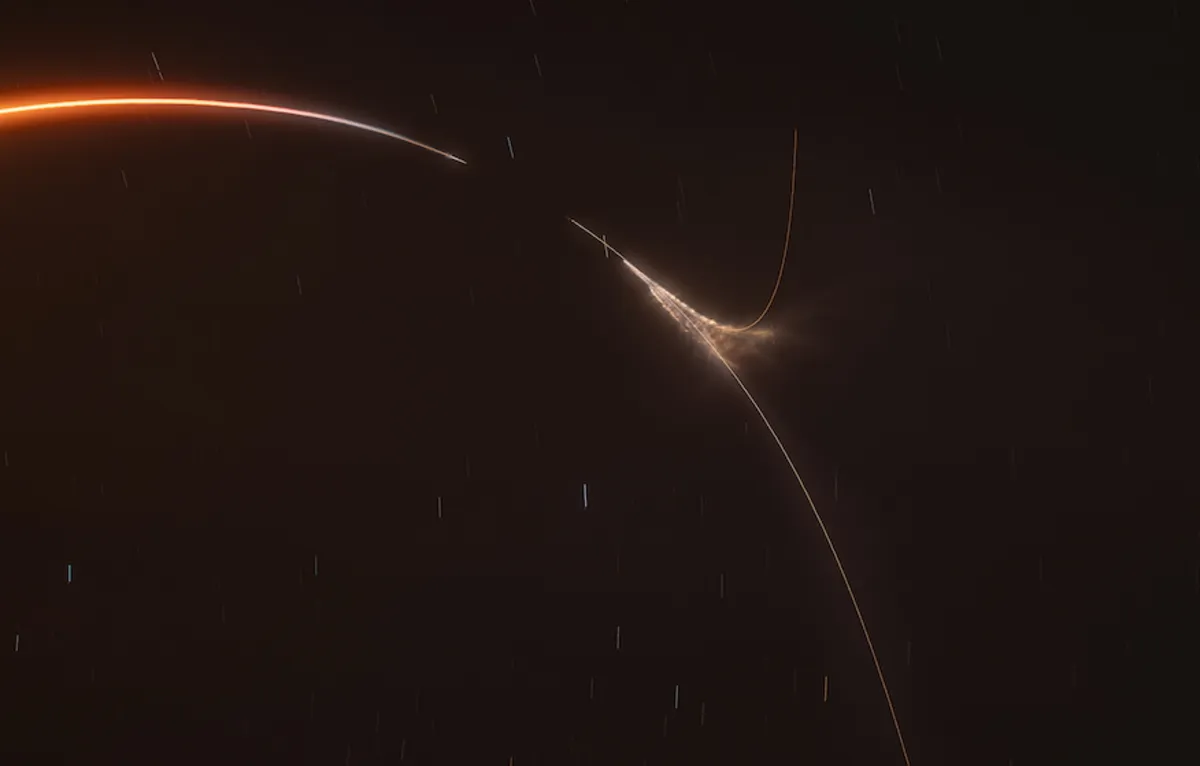
Early Monday morning, SpaceX launched an uncrewed Cargo Dragon spacecraft as part of its Commercial Resupply Services 32 (CRS-32) mission to the International Space Station (ISS). The launch took place at 4:15 a.m. EDT (0815 UTC) from pad 39A at the Kennedy Space Center. This mission carries increased significance due to a recent mishap involving another U.S. cargo ship, necessitating a timely resupply to the ISS.
The CRS-32 mission is set to deliver approximately 6,700 pounds (3,000 kg) of vital science and supplies to the ISS. Approximately 9.5 minutes post-launch, the Cargo Dragon successfully separated from the upper stage of the Falcon 9 rocket. Docking with the ISS's forward port of the Harmony module is anticipated around 8:20 a.m. EDT (1220 UTC) on Tuesday, April 22. The docking process will be monitored by NASA astronaut Jonny Kim and Japan Aerospace Exploration Agency (JAXA) astronaut Takuya Onishi from inside the station.
SpaceX did not provide live coverage of the Dragon's separation but confirmed its success. Notably, the trunk of the Cargo Dragon contains the STP-H10 suite of payloads for the Department of Defense’s Space Test Program, which was not mentioned prior to the launch. The mission comes at a time when NASA had to adjust its supply manifest earlier this year due to damage to the pressure vessel for the Northrop Grumman Cygnus NG-22 mission, which was ultimately canceled.
NASA's ISS Program Chief Scientist, Jennifer Buchli, mentioned, “We did have to reshuffle a bit of the manifest to make room for some more food and resupplies for the crew. However, we were able to optimize our cargo on this flight and add some more investigations back in.” This highlights the ongoing challenges of maintaining a reliable supply chain for the ISS, especially with the delays faced by other missions.
The upcoming Northrop Grumman delivery mission, NG-23, is not scheduled to launch until September. Additionally, the introduction of Sierra Space’s Dream Chaser cargo vehicle is running over a year behind schedule, complicating the ISS resupply process. Zebulon Scoville, NASA’s ISS Program Deputy Manager, indicated that Dream Chaser is expected to launch in the fall, alongside Japan's next generation of cargo ships, the HTV-X.
As part of future plans, NASA is also considering a cargo-only mission for Boeing’s Starliner capsule. The next Cargo Dragon mission, CRS-33, is projected to launch during the summer of 2024 and will test technologies for the U.S. Deorbit Vehicle, which SpaceX is developing to safely decommission the ISS around 2031.
During this mission, the Cargo Dragon C209, which is on its fifth flight, will feature “enhanced” drogue parachutes designed for improved safety. SpaceX’s Director of Dragon Mission Management, Sarah Walker, explained that these parachutes have been developed with stronger joints and a flipped pack to ensure smoother deployment. “This is just one more way that we tangibly demonstrate that safety is our top priority,” Walker stated.
The first stage booster used for this mission, B1092, successfully landed at Landing Zone 1 (LZ-1) at Cape Canaveral Space Force Station, marking the 51st landing at this site. The CRS-32 mission was the first orbital flight from the Eastern Range since April 14, and the launch team was well-prepared, with a high probability of favorable weather conditions.
The Cargo Dragon is carrying 4,780 pounds (2,168 kg) of pressurized cargo and 1,653 pounds (750 kg) of unpressurized payloads. Among the more than 30 new experiments onboard are projects sponsored by the ISS National Laboratory and the U.S. National Science Foundation (NSF). One notable experiment from Rensselaer Polytechnic Institute (RPI) focuses on protein fluid flow and clumping, utilizing the Ring-Sheared Drop module to enhance drug manufacturing processes.
Another significant experiment is the Aerosol Monitors investigation, aimed at testing various air quality monitors to improve crew safety in orbit. The findings from these tests have implications for public health back on Earth, aiding in climate change efforts. Additionally, NASA's Biological and Physical Sciences Division is conducting the Advanced Plant Experiment-12 (APEX-12) to study the effects of space radiation on telomeres, which could have substantial implications for future long-duration missions.
In summary, the successful launch of the CRS-32 mission exemplifies SpaceX's ongoing commitment to supporting the ISS and advancing space exploration technologies, while also addressing the complex challenges of resupply logistics in low Earth orbit.